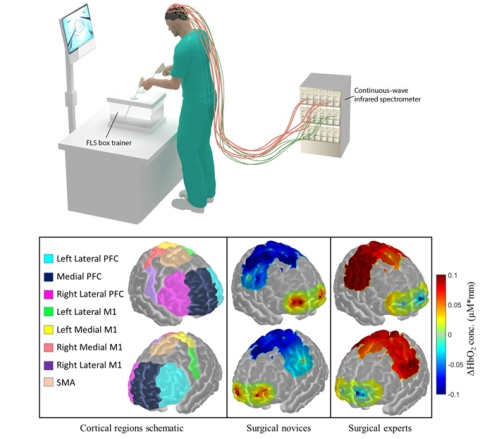What defines an expert surgeon? Does a surgical expert have finer motor skills than a resident or novice? Can this be objectively measured to help measure surgical performance? The answer to these questions can help reduce over 300,000 perioperative mortalities that cost over $9 billion each year. Unfortunately, current metrics to measure surgical performance are subjective and cannot robustly differentiate between surgical novices or experts, thus prompting for more objective and analytical approaches.

We propose a method to use functional near infrared spectroscopy (fNIRS) to measure cortical changes in real-time during a complex surgical task. fNIRS is a non-invasive brain imaging technique that measures the fluctuations of hemodynamics signals, namely changes in concentration of oxy- (HbO) and deoxy- (HbR) hemoglobin specific cortical regions in real time. We utilize a continuous wave 16 channel system with probes specific to the prefrontal cortex (PFC), primary motor cortex (M1) and supplementary motor area (SMA). Our results show that fNIRS can not only significantly differentiate motor skill proficiency but also accurately classify subjects into novices or experts based on functional activation. This method to quantify motor skill proficiency changes the paradigm of motor skill assessment and can be directly applied in other fields such as stroke rehabilitation, athletics, vocational training, neo-natal motor skill development assessment.
